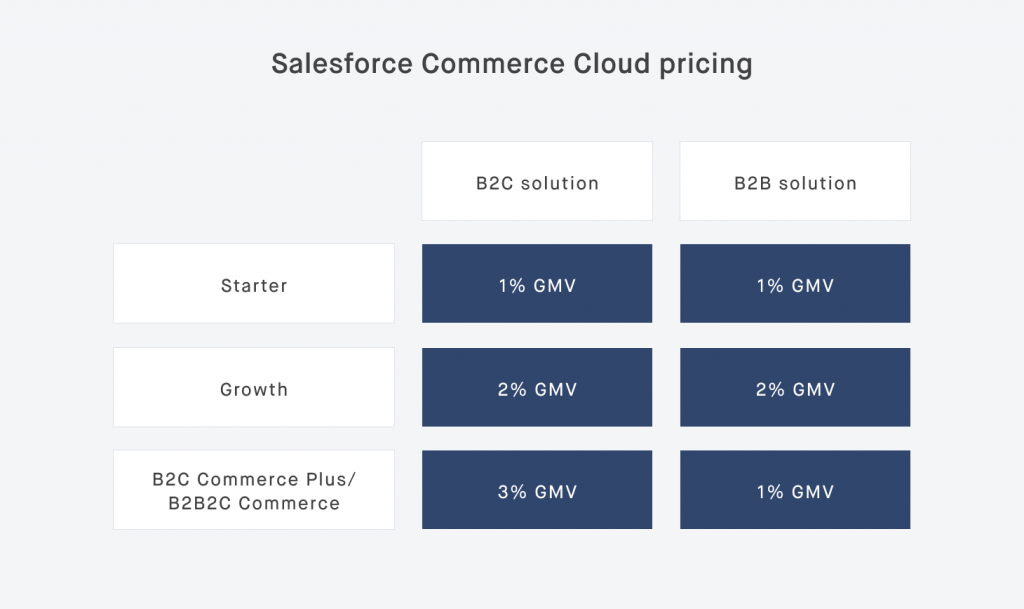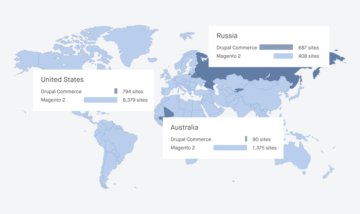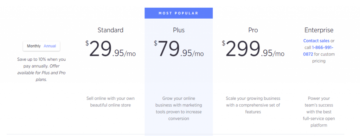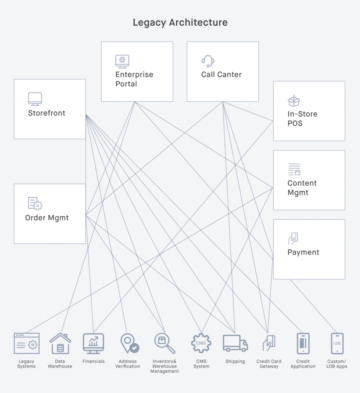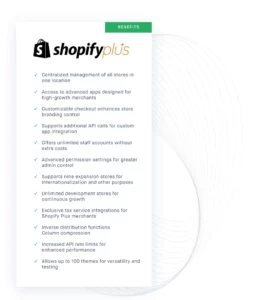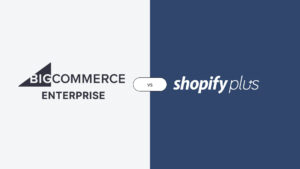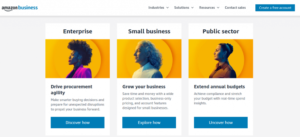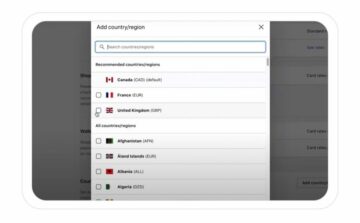Salesforce Commerce Cloud from A to Z: Definition, Pricing, Features, and Benefits
Going digital for a retail business isn’t a would-be-nice-to-have anymore. It’s a must. Around 83% of consumers shopped both online and in-store in 2021. So, if you’re not present online, consider yourself non-existing to your customers at all.
Salesforce Commerce Cloud (SFCC, formerly known as Demandware) is a promising SaaS solution for companies that want not only to go online but also to deliver outstanding customer experience across multiple touchpoints. Used by major brands like Adidas, Puma, and Lacoste, it offers a wealth of capabilities to enterprise-level merchants which we will walk through in this article.
As a certified SFCC consulting and implementation partner, Elogic knows the ins and outs of the platform, its pros and cons, add-ons, and customization tricks — everything to make your transition to online sales smooth. Having launched 200+ ecommerce sites, we’ve seen what challenges retailers come across and how Commerce Cloud helps to address them.
Read on to find a full-fledged Salesforce Commerce Cloud overview and see some essential details that will help you make a weighted decision if the SFCC platform is right for your business.
What Is Salesforce Commerce Cloud?
Let’s start with a bit of history and the definition of Salesforce Commerce Cloud that emerged from two products Salesforce acquired: Demandware in 2016 and CloudCraze in 2018.
Salesforce Commerce Cloud (SFCC) is an easy-to-scale cloud software-as-a-service (SaaS) solution for ecommerce websites. It helps you orchestrate all of your communication channels, creating a holistic experience for your customers wherever they are — on desktop or on mobile.
Read more: What is Magento Commerce Cloud? – Features And Benefits
SFCC ecommerce offers two distinct products for retailers:
Salesforce B2B Commerce Cloud: the edition will come in handy for launching online storefronts where a business can either buy large amounts of products from suppliers or make wholesale purchases.
Transparent pricing, AI-powered ordering, smart search, product recommendations, and the possibility to go directly to your business customers enable you to grow your operating profit up to $3.6M in 3 years.
Salesforce B2C Commerce Cloud: this solution will suit you most if you interact with individual online shoppers.
If you struggle to deliver timely communications, the B2C platform has an AI engine named Einstein behind it, accompanied by social media extensions, a marketing suite, multiple store templates, and other features we’ll discuss later in the article. Personalization is its biggest strength, so you can always meet your customers where they are and provide shopping recommendations which boost your sales and conversions.
Salesforce Commerce Cloud Pricing
Since SFCC is highly scalable, its price is flexible and depends on multiple factors. The platform itself follows a shared model pricing. This means Salesforce is so confident in its solution that it charges 1–3% of your gross merchandise value (GMV) for the B2C edition and 1–2% for the B2B edition.
SFCC pricing model itself will certainly appeal to companies with strong profit margins. That’s why retailers selling beauty products or apparel will consider SFCC as their primary option for ecommerce. Instead of paying the license fee upfront, such merchants will become a part of the Salesforce shared success program and pay a percentage off their actual revenue.
You might also need assistance with the rollout or customization of your SFCC store, which brings extra expenses to your budget and ensures the high quality of implementation.
Get in touch to discover your Salesforce Commerce Cloud pricing options for our help with integration.
Key Features of Salesforce Commerce Cloud
We’ve partially mentioned the functionality available in the B2B and B2C solutions, so now let’s review the most fundamental Salesforce Commerce Cloud features.
Predictive artificial intelligence
A McKinsey report highlights that 76% of customers are eager to purchase from a company that offered them a personalized experience.
Einstein AI in SFCC allows you to enhance your customers’ shopping experiences and streamline your upselling. It analyzes data about your store visitors’ behavior to adjust search results, product sorting, and recommendations.
[embedded content]
Comprehensive omnichannel suite
Salesforce Commerce Cloud empowers you to connect your customers across all possible touchpoints, both physical and digital.
A customer may start their journey from your website, check reviews on social media, place an order via live chat with your support team, and pick it up at the offline shop. Salesforce takes care of any possible scenario to make their experience flawless.
Imagine you sell internationally and have multiple call centers in various countries. Your customer may get to know your brand on the website first and contact you with a question via a chatbot. SFCC will route the user’s request and/or question to the agent speaking their language. Next time you receive an inquiry from the same customer, even if it comes as a text message or a voice call, the system will recognize the language spoken first time and direct them to the right customer support agent.
Optimized localization
Because of market specifics and regulations, you might need to create separate websites for each country you operate in. With SFCC, it’s easy to handle localization and adjust to the country’s legal requirements. For example, you should follow different taxation policies for the US and EU. Not to mention that you should take a different approach to marketing activities and branding, mind languages, currencies, and sociocultural nuances.
Top-notch marketing and merchandising tools
The advanced ecommerce merchandising toolkit enables consistency of product display and pricing in different countries. While the sophisticated marketing features will take your campaign’s launch and monitoring to the next level, SFCC will also help you to adapt key messages, test them across channels, and drive sales by striking the right chord with your customers.
Easy adaptation to mobile devices
In the second quarter of 2022, almost 59% of web traffic came from mobile devices (the number doesn’t include tablets, by the way). Salesforce’s ecommerce platform follows the mobile-first approach, so your website will look equally well on a wide range of the most popular smartphones.
Read more: What is M-commerce: Types, Features and Trends
Besides, SFCC offers an extensive set of payment options, including Apple Pay and Google Pay. So your online checkout on handheld devices will be frictionless.
For instance, Puma uses SFCC to boost mobile experiences for their shoppers:
Full scalability
You may start as a tiny local shop and grow to a large enterprise over years. Or you may want to expand your product catalog. SFCC is there for you whatever scaling you may need.
The platform can easily handle large traffic loads, so you can be sure your customers will be able to place an order without your website freezing, crashing, or UI lags even during seasonal sales. The cloud-hosted architecture allows the platform to easily add more web and application servers to accommodate more users.
Effortless auto-upgrading
Salesforce regularly delivers some new features or fixes. Being the SaaS platform, it allows you to apply those changes via your admin panel. In most cases, you don’t even have to address a technical team for those upgrades.
As you might have noticed, some features already sound like advantages of Salesforce Commerce Cloud. Time to have a closer look at them.
Top 7 Benefits of Salesforce Commerce Cloud
In the end, ecommerce is all about increasing sales. Yet, this final goal consists of the smaller parts, which we call “perks” or “advantages.” So, here are the benefits you can derive from Salesforce for ecommerce.
Read more: 10+ Advantages and Disadvantages of Ecommerce to a Business
#1 Smart, AI-powered data analysis
Get a 360-degree view of your customers’ behavior. Understand their real needs and turn that knowledge into relevant offers.
For instance, Einstein Commerce Insights allows you to analyze a shopping cart and discover what other products your customers buy along with the one they’ve chosen initially. And the perfect news is that you don’t have to integrate any third-party resources for capturing that data.
#2 The improved shopping experience for your customers
Attract your clients through smart product recommendations, predictive sorting, and advanced search suggestions. Add click-and-collect to unify online and in-store customer journeys. By the way, 25% of those who pick the click-and-collect option, buy some extra goods at your offline shop.
#3 Increased marketing efficiency
What makes this one stand out among the other benefits of Salesforce Commerce Cloud is a better sync between your marketing and sales departments. It contains an advanced toolkit for marketing and merchandising, enabling you to align your promotional activities.
SFCC puts to an end an eternal holy war between sales and marketing, where marketing usually blames sales for losing the leads, while sales blame marketing for not attracting quality leads.
With content, catalog, products, and pricing management, you can handle multiple sites, currencies, and localizations from a single space. Additionally, these features will help you display the right product to the right customer, increasing conversion chances.
To drive more engagement (and conversions for that matter), you can also use built-in SFCC targeting and A/B testing tools. They allow you to launch, run, monitor, analyze, and adjust your marketing campaigns to make them even more precise.
The native SEO tools enable you to optimize your website for search engines and get more quality traffic to your online store. This will help you rank higher and increase your visibility.
Finally, SFCC empowers you to minimize manual operations by automating many routine day-to-day tasks, like data collection or copy-pasting from one tool to another. A recent Forrester research indicates that Salesforce helps marketers to improve their productivity by 20% already in the second year after adoption.
#4 Enhanced customization
Creating an attractive and user-friendly design for your ecommerce website has never been easier. With the “Page Designer” feature (a kind of CMS), even non-tech users can build page layouts, templates, and components on their own and reuse them further on. Also, there are lots of pre-designed elements and blocks you can choose from.
Just in a few clicks, you can drag and drop carousels, banners, and components to create a page. You can also preview content before going live and schedule when to publish it.
What’s more, you can create a custom design for your website pages and components, to stand out from the crowd and drive more sales. Yet, here you might need the assistance of professional Salesforce Commerce Cloud developers.
#5 Unified look and feel across multiple devices
SFCC ensures full mobile compatibility of your online shop because of responsive websites. This means your site will look and work equally well on a laptop, smartphone, or tablet. The important thing here is that Google is more loyal to websites that adopt a mobile-first approach and ranks them higher.
While building your pages in the Page Designer, you’ll be able to preview how they look on mobile and adjust the content, if needed.
#6 5-star customer support
According to Forrester research, your agents spend around 35% of their time looking for relevant info in tons of documentation. Approximately 15% of their time goes to copying and pasting data from one app/tool to another one. And nearly 10% of the time they try to get the answer from the experts in charge. Together with other routine manual operations, there’s little to no time left to communicate with your customer.
Salesforce Commerce Cloud provides better customer visibility. Thus, there’s no need to play guessing games about what your clients want or how to help them. Also, the platform enables your support representatives to provide customer-oriented services and reduce call time by 25% and case volume by 10%.
#7 Lower maintenance costs
Being the SaaS solution, SFCC takes the burden of upgrades, security checks, and other technical things off retailers’ shoulders. This means you don’t have to support a legacy internal system, spending tons of resources on its maintenance.
Also, there’s no need to take care of new features as Salesforce does it for you. The platform is constantly evolving and delivering regular updates to provide you with the best-in-class ecommerce functionality.
Sometimes, this advantage can turn into a limitation. If you’re looking to customize a module or build one of your own, you’ll surely need to partner with a trusted Salesforce implementation agency to get it done for you.
Looking for Salesforce Commerce Cloud implementation or customization?
Reach out to us at Elogic
Get a free consultationIntegration Into Salesforce Digital 360
It’s worth noting that Salesforce Commerce Cloud isn’t a self-standing ecommerce platform, like Shopify or BigCommerce. It comes as a part of the Salesforce Digital 360 unit which brings together commerce, marketing, and CRM systems under one hood.
This ecosystem maximizes Salesforce Commerce Cloud benefits and empowers you to:
- Boost and automate customer engagement
- Get smart analytics to improve marketing performance
- Achieve maximum personalization after getting valuable insights into customer behavior
- Manage loyalty to create exceptional experiences during the customer’s lifetime
- Provide hassle-free checkout and streamline payments
Thus, you’ll be able to unify all of your online activities and establish long-time relations with your customers.
Top 5 Examples of Successful Salesforce Commerce Cloud Implementation
As of December 2022, 5,832 ecommerce sites use SFCC. That’s why our Salesforce Commerce Cloud overview would be incomplete without mentioning real-life examples of its usage.
- L’Oréal. To build meaningful relations with consumers and beauty professionals, the company uses both B2C & B2B solutions. Commerce Cloud is behind 200+ L’Oréal’s D2C websites, with one of the brands generating 15% to 20% more sales thanks to Einstein AI recommendations.
- Guess. Because of COVID-19, the company had to improve its online presence. In 12 months, they migrated their in-house ecommerce stores from 48 countries to SFCC. They immediately noted 72% faster loading of the websites, followed by conversion rates rising by 60%.
- ECCO. In 2015, ECCO started testing Endless Aisle, a part of the B2C Commerce Cloud solution. Their primary goal was to serve customers better. So, they bought iPads for consultants in one of the brick-and-mortar stores. This way, they could help the visitors to find and buy necessary products either in the shop or online. The test resulted in rolling it out to 26 more stores in the US.
- Unilever. Having 400+ brands and over 160,000 employees makes Unilever one of the biggest consumer goods companies. The company is an active user of Salesforce products, including Commerce Cloud. It allows them to connect with their customers via different channels, including websites they launch in weeks or months, instead of years.
- Puma. The company wanted to leverage the power of mobile traffic to the fullest, that’s why they’ve decided to give SFCC a try. They adopted Commerce Cloud’s Storefront Reference Architecture, by rolling it out for different countries with multilanguage and multicurrency support. Since then, their mobile sites load faster by 69%, and images load in under 2 seconds. On top of that, their websites cope with higher traffic volumes, followed by a slight improvement in conversion.
Want to extend the list with your own SFCC success story?
Partner with Elogic and become the new leader in your ecommerce niche
Get a free consultationWhy is Salesforce Commerce Cloud Worth your Attention?
Give and grow. This is the quintessence of SFCC.
You give your customers more convenient ways to interact with your brand and improve their experience both online and offline.
They give you valuable insights, their money, love, and recommendations, which means growing your business.
Salesforce Commerce Cloud enables you to speed up your time-to-market, apply a data-driven approach to your promo activities, and scale almost endlessly. The latter is possible due to advanced customization with Page Designer and multiple add-ons.
Yet, even the most sophisticated solution like SFCC may not be good for you out-of-the-box. You’ll need to pick the Salesforce Commerce Cloud capabilities that suit your business needs and tailor them to your ecommerce requirements. Finally, without prior experience, you can simply get lost in the extensive functionality of the platform.
No worries, we’re here for you. If you need any help with integration, customization, or migration to SFCC, our certified Salesforce consultants will gladly answer all of your questions.
Don’t know what to start with?
We’re here to guide you through the transition. Just drop us a message.
Get a free consultationFrequently Asked Questions
Who can use Salesforce Commerce Cloud?
Actually, any retailer can use it. Yet, it’s more popular among fashion and lifestyle brands, as you can see from the customer success stories.
If we talk about company size, SFCC is mostly used by mid and large-sized companies (with 50 to 200 employees or more).
What does Salesforce Commerce Cloud do?
Salesforce Commerce Cloud capabilities enable you to cover more touchpoints with your customers, deliver personalized services to them, launch in new markets faster, and boost conversions. It helps you make analytics-based decisions to provide truly unforgettable services to your shoppers.
What are the disadvantages of Commerce Cloud?
There are not so many, but some users find it a bit pricey. Also, quite often customizations require specific technical knowledge. This means you might need the helping hand of certified Salesforce developers.
What’s in Salesforce Commerce Cloud?
Salesforce Commerce Cloud includes B2B and B2C solutions that can be used independently. To name a few tools, it contains Commerce + CRM, Headless Commerce, Einstein AI, and others. As far as it’s a SaaS platform, you can opt for the most suitable configuration to match your business needs.
What is Salesforce Commerce Cloud’s best feature?
Our vote goes to Einstein AI, which helps you to build highly personalized experiences for your customers. As a result, you can increase conversions and get more revenue within a shorter timeframe.
- SEO Powered Content & PR Distribution. Get Amplified Today.
- Platoblockchain. Web3 Metaverse Intelligence. Knowledge Amplified. Access Here.
- Source: https://elogic.co/blog/salesforce-commerce-cloud-definition-pricing-features-benefits/
- $3
- 000
- 1
- 12 months
- 15%
- 2016
- 2018
- 2021
- 2022
- 28
- 35%
- 360-degree
- 67
- 7
- a
- Able
- About
- accommodate
- acquired
- across
- active
- activities
- adapt
- Additionally
- address
- Adidas
- admin
- adopt
- adopted
- Adoption
- advanced
- ADvantage
- advantages
- After
- agency
- Agent
- AI
- AI engine
- AI-powered
- All
- allows
- already
- always
- among
- amounts
- analytics
- analyze
- analyzes
- and
- Another
- answer
- appeal
- Application
- Apply
- approach
- approximately
- architecture
- around
- article
- artificial
- Assistance
- attention
- attracting
- attractive
- automate
- automating
- available
- B2B
- B2C
- banners
- Beauty
- because
- become
- before
- behind
- being
- benefits
- BEST
- Better
- between
- Biggest
- Bit
- Blocks
- boost
- bought
- brand
- branding
- brands
- Brings
- budget
- build
- Building
- built-in
- burden
- business
- buy
- call
- Campaigns
- capabilities
- Capturing
- care
- case
- cases
- catalog
- Centers
- certainly
- Certified
- challenges
- chances
- Changes
- channels
- charge
- charges
- chatbot
- check
- Checkout
- Checks
- Choose
- chosen
- clients
- closer
- Cloud
- Cms
- collection
- come
- Commerce
- communicate
- Communication
- Communications
- Companies
- company
- compatibility
- components
- confident
- Configuration
- Connect
- Cons
- Consider
- constantly
- consultants
- consulting
- consumer
- Consumers
- contact
- contains
- content
- Convenient
- Conversion
- conversions
- copying
- could
- countries
- country
- country’s
- cover
- COVID-19
- Crashing
- create
- Creating
- CRM
- crowd
- currencies
- custom
- custom design
- customer
- customer experience
- Customer Success
- Customer Support
- Customers
- customization
- customize
- data
- data-driven
- December
- decided
- decision
- decisions
- deliver
- delivering
- delivers
- departments
- depends
- Design
- Designer
- desktop
- details
- developers
- Devices
- different
- digital
- direct
- directly
- discover
- discuss
- Display
- distinct
- documentation
- Doesn’t
- Dont
- drive
- Drop
- during
- each
- easier
- easily
- ecommerce
- ecosystem
- edition
- either
- elements
- embedded
- emerged
- employees
- empowers
- enable
- enables
- enabling
- Endless
- endlessly
- engagement
- Engine
- Engines
- enhanced
- ensures
- Enterprise
- enterprise-level
- equally
- essential
- establish
- Ether (ETH)
- EU
- Even
- everything
- evolving
- example
- examples
- exceptional
- Expand
- expenses
- experience
- Experiences
- experts
- extend
- extensions
- extensive
- external
- extra
- factors
- Fashion
- faster
- Feature
- Features
- fee
- few
- final
- Finally
- Find
- First
- first time
- flexible
- follow
- followed
- follows
- formerly
- Free
- Freezing
- frictionless
- from
- full
- full-fledged
- functionality
- fundamental
- further
- Games
- get
- getting
- Give
- Go
- goal
- Goes
- going
- good
- goods
- gross
- Grow
- Growing
- guide
- handle
- handy
- having
- help
- helping
- helps
- here
- High
- higher
- highlights
- highly
- history
- holistic
- hood
- How
- How To
- HTTPS
- images
- immediately
- implementation
- important
- improve
- improved
- improvement
- in
- include
- includes
- Including
- Increase
- increased
- increasing
- independently
- indicates
- individual
- initially
- insights
- instance
- instead
- integrate
- integration
- interact
- internal
- IT
- itself
- journey
- Journeys
- Key
- Kind
- Know
- knowledge
- known
- LACOSTE
- language
- Languages
- laptop
- large
- launch
- launched
- launching
- layer
- layer 1
- Layer 2
- leader
- Leads
- Legacy
- Legal
- Level
- Leverage
- License
- lifestyle
- limitation
- List
- little
- live
- load
- loading
- loads
- local
- Localization
- Look
- looking
- losing
- love
- loyal
- Loyalty
- maintenance
- major
- make
- MAKES
- management
- manual
- many
- margins
- Market
- marketers
- Marketing
- Markets
- Match
- Matter
- max-width
- maximizes
- maximum
- McKinsey
- meaningful
- means
- Media
- Meet
- mentioned
- merchandise
- merchandising
- Merchants
- message
- messages
- Mid
- might
- migration
- mind
- Mobile
- model
- module
- money
- Monitor
- monitoring
- months
- more
- most
- Most Popular
- multiple
- name
- Named
- native
- nearly
- necessary
- Need
- needs
- New
- New Features
- news
- next
- noted
- number
- offered
- Offers
- offline
- omnichannel
- ONE
- online
- operate
- operating
- Operations
- Optimize
- Option
- Options
- order
- Other
- Others
- outstanding
- overview
- own
- panel
- part
- partner
- parts
- Pay
- paying
- payment
- percentage
- perfect
- personalization
- Personalized
- physical
- pick
- Place
- platform
- plato
- Plato Data Intelligence
- PlatoData
- Play
- policies
- Popular
- possibility
- possible
- power
- presence
- present
- Preview
- price
- pricing
- primary
- Prior
- Product
- productivity
- Products
- professional
- professionals
- Profit
- Program
- promising
- promotional
- PROS
- provide
- provides
- publish
- PUMA
- purchases
- Puts
- quality
- Quarter
- question
- Questions
- range
- ranks
- Rates
- real
- receive
- recognize
- recommendations
- regular
- regularly
- regulations
- relations
- relevant
- report
- Representatives
- request
- require
- Requirements
- research
- Resources
- responsive
- result
- Results
- retail
- retailer
- retailers
- revenue
- review
- Reviews
- rising
- Rolling
- Route
- Run
- SaaS
- sales
- salesforce
- same
- scalable
- Scale
- scaling
- schedule
- Search
- Search engines
- Second
- second quarter
- seconds
- security
- Selling
- seo
- serve
- Services
- set
- shared
- Shop
- Shopping
- should
- simply
- since
- single
- site
- Sites
- Size
- smaller
- smart
- smartphone
- smartphones
- So
- Social
- social media
- solution
- Solutions
- some
- sophisticated
- Sound
- Space
- speaking
- specific
- speed
- spend
- Spending
- stand
- start
- started
- store
- Storefront
- stores
- Stories
- Story
- streamline
- strength
- strong
- Struggle
- success
- Success Stories
- success story
- successful
- such
- Suit
- suitable
- suite
- suppliers
- support
- surely
- system
- Systems
- Tablet
- Take
- takes
- Talk
- targeting
- tasks
- Taxation
- team
- Technical
- templates
- test
- Testing
- The
- their
- thing
- things
- third-party
- Through
- time
- timeframe
- to
- together
- tons
- tool
- toolkit
- tools
- top
- touch
- traffic
- transition
- trusted
- TURN
- types
- ui
- under
- understand
- unforgettable
- unit
- Updates
- upgrades
- us
- Usage
- use
- User
- user-friendly
- users
- usually
- Valuable
- value
- various
- via
- View
- visibility
- visitors
- Voice
- volume
- volumes
- Vote
- wanted
- war
- ways
- Wealth
- web
- Web Traffic
- Website
- websites
- Weeks
- What
- which
- while
- WHO
- wholesale
- wide
- Wide range
- will
- within
- without
- Work
- worth
- would
- year
- years
- Your
- yourself
- youtube
- zephyrnet

